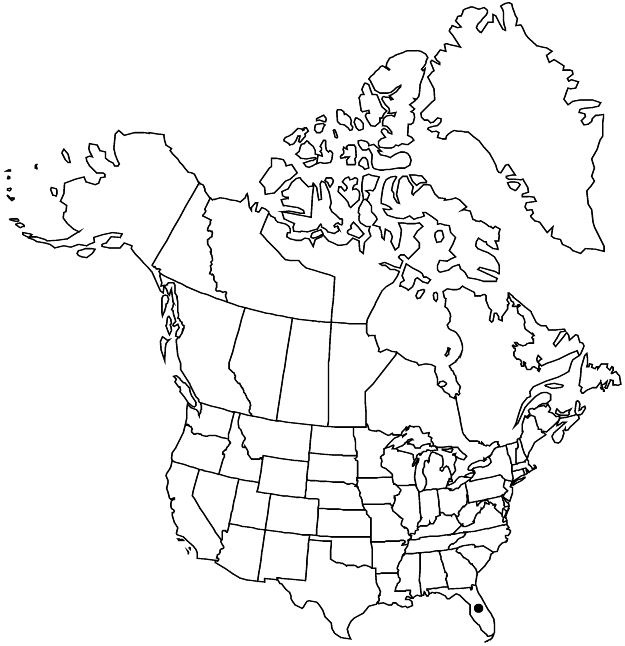Sida littoralis
Phytoneuron 2014-75: 1. 2014.
Herbs, perennial, 1–2 m. Stems erect, minutely stellate-hairy to glabrescent. Leaves: stipules free from pedicel, filiform to linear, often curved or twisted, 4–9 mm, subequal to corresponding petiole; petiole 4–7 mm, ca. 1/10 length of blade, sparsely stellate-hairy; blade lanceolate-elliptic to subrhombic, 5–9 cm, 4–7 times longer than wide, base cuneate, margins crenulate-serrate to base, apex acute, surfaces sparsely stellate-hairy abaxially, glabrescent adaxially. Inflorescences axillary solitary flowers, often congested apically. Pedicels unarticulated, 0.5–1 cm, shorter than subtending leaf, shorter than or subequal to calyx. Flowers: calyx ribbed, 7–9 mm, glabrous, lobes trullate; petals yellow, 15 mm; staminal column hairy; style 9–12-branched. Schizocarps oblate, 6–7 mm diam., apically hairy; mericarps 9–12, 5 mm, laterally reticulate, apex spined, spines 1.5–2 mm.
Phenology: Flowering spring–summer.
Habitat: Sand and gravel substrates in forests
Elevation: 0–30 m
Discussion
Sida littoralis is found on Captiva and La Costa islands, Lee County.
Selected References
None.
Lower Taxa
"/10lengthofblade" is not declared as a valid unit of measurement for this property.
